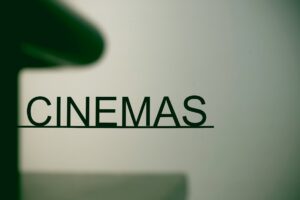The art market is booming as a result of the growing popularity of digital non-traditional galleries.

The art market is booming as a result of the growing popularity of digital non-traditional galleries.
The world’s art industry is now going through a period of profound change, which is being driven by the meteoric emergence of digital non-traditional galleries. The advent of non-fungible tokens (NFTs), which are able to verify digital artworks by using blockchain technology, has made it possible for art collectors, investors, and artists to interact with art in ways that were previously unimaginable. This transformation has not only had the effect of broadening the concept of what constitutes “art,” but it has also had the effect of redefining ownership, accessibility, and value within the cultural economy. One of the most rapid booms in the art market in decades is now taking place as a result of the expansion of digital platforms and the increasing number of purchasers entering the market.
A New Era of Ownership of Digital Platforms
The ownership of works of art, such as paintings, sculptures, and installations, was traditionally associated with the actual objects themselves. On the other hand, non-fungible tokens (NFTs) enable collectors to own one-of-a-kind digital assets that cannot be copied, despite the fact that the files themselves may be shared online. This breakthrough has resulted in the creation of an entirely new kind of digital property rights, which has made the ownership of various works of art available to a much larger audience around the world.
Accessibility as well as a worldwide reach
On the other hand, non-traditional galleries are available online and may be accessed from any area in the globe, in contrast to conventional galleries, which are sometimes restricted to certain geographical locations. Artists from underdeveloped nations, independent producers, and emerging talent are able to present their work directly to worldwide customers without having to rely on middlemen because to this global reach. Consequently, the art market is broadening its scope and becoming more democratic as a consequence.
The Growing Popularity of Online Galleries
Currently, digital platforms are hosting virtual galleries that allow users to see, buy, and interact with artworks in environments that are completely immersive. The purpose of these galleries is to create interactive settings that allows collectors to study collections as if they were strolling through actual halls. These galleries are modeled after real-world exhibits, but they enhance them with features of augmented and virtual reality. Art displays are now able to be boundless and global thanks to this innovation.
The Direct Sales Industry Is Beneficial to Artists
Artists’ ability to make money off of their work has been revolutionized by NFT galleries. In contrast to the conventional art market, where galleries or auction houses sometimes take a significant cut of the proceeds, blockchain-based sales make it possible for artists and collectors to conduct transactions directly with one another. In addition, smart contracts guarantee that artists will earn royalties each time their work is resold, which offers the possibility of long-term revenue that was previously uncommon in the business.
Speculation and Investment Investment
Aside from the enjoyment of art, non-fungible tokens have become a fertile ground for financial speculation. As a result of the fact that certain pieces have been sold for millions of dollars, investors have begun to see NFTs as valuable assets comparable to rare collectibles. Despite the fact that this has resulted in price fluctuations, it has also attracted a substantial amount of money into the market, which has accelerated the sector’s overall development and established digital art as a genuine investment class alongside conventional fine art.
Between the Worlds of Traditional and Digital Art
In a fascinating development, a growing number of conventional art galleries and museums are starting to experiment with non-fungible tokens (NFTs) by digitizing their current collections or by organizing hybrid exhibits that include both physical and digital works. It is clear from this convergence that non-traditional forms of expression are not supplanting conventional forms of art but rather broadening their scope, therefore establishing new cultural intersections between technology and creativity.
Obstacles and Criticisms to Consider
Notwithstanding its exploding popularity, the NFT art market is confronted with difficulties. As a result of the energy-intensive nature of blockchain transactions, concerns over the effect on the environment continue to be a subject of discussion. Concerns over legitimacy, market manipulation, and price bubbles are also a source of mistrust among detractors, who believe that the market is still in the process of developing and is prone to volatility.
The Path Forward for Digital Data Collection
As blockchain technology continues to improve, it is anticipated that non-fungible token (NFT) galleries will get increasingly more sophisticated, including elements such as holographic displays, artificial intelligence, and tailored experiences for collectors. It is possible that over the course of time, non-fungible tokens (NFTs) may expand their influence on the creative economy to include not just fine art but also music, fashion, and cultural relics.
In the realm of art, a cultural revolution is ongoing.
Not only does the proliferation of digital non-traditional art galleries signify a rise in financial prosperity, but it also signifies a cultural shift in the manner in which people understand and engage with art. NFTs are pushing the art market into unknown terrain by combining technology, creativity, and business. This is causing boundaries to become more hazy and chances to present themselves in an infinite number of ways. Not longer is the subject of whether or not digital art is “real art,” but rather the question is of how far this new wave of creativity will lead us.




